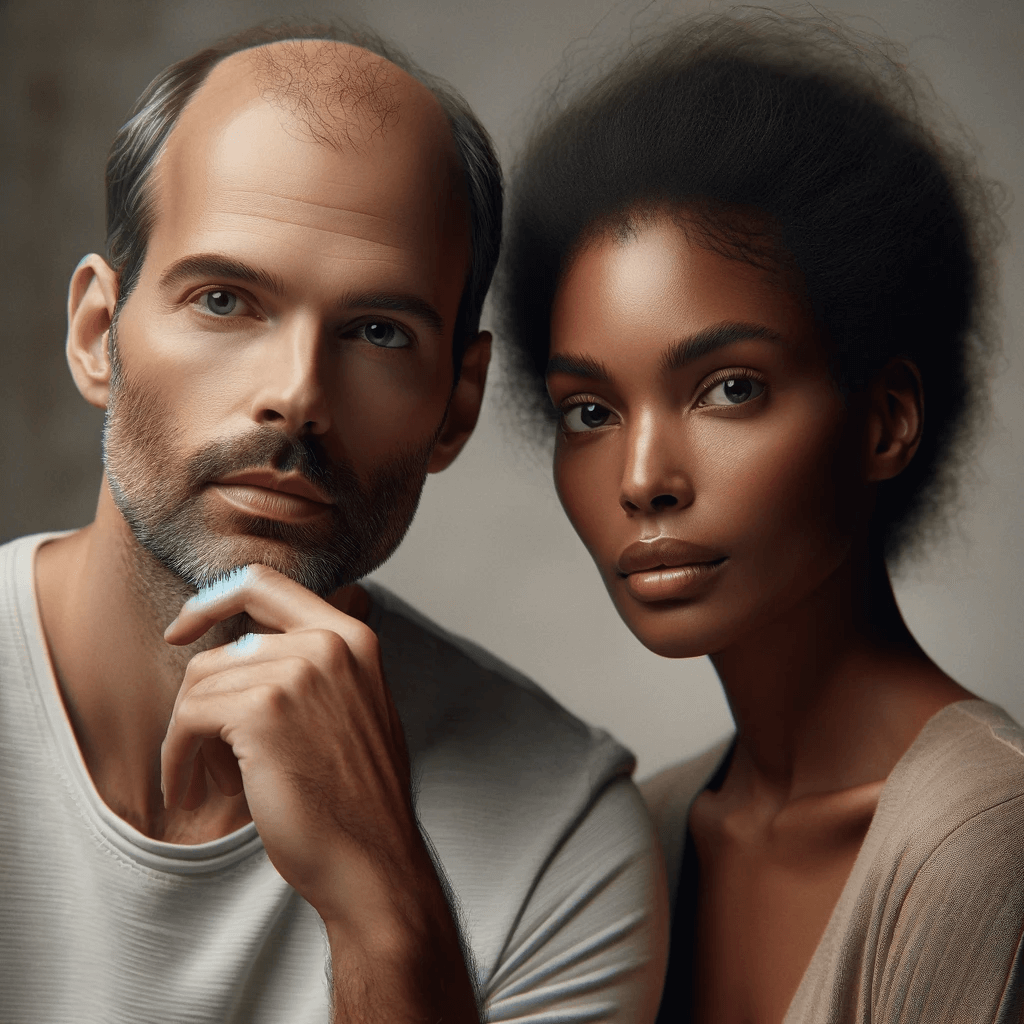
Hair Today, Gone Tomorrow: Tackling Hair Loss in Your Prime
POSTED ON January 29, 2024
Written by Coach Resha
Trichologist Certified by American Medical Certification Association & USTI
Hair loss isn’t just a matter of appearance; it’s a profound issue impacting millions in silence, affecting their mental and emotional well-being. In this blog, we’ll uncover some eye-opening facts about hair loss in women aged 35 to 55 and men aged 25 to 45. Understanding the importance of early intervention is crucial for better outcomes, both in terms of appearance and emotional health.
The Widespread Issue: Hair Loss Facts
- In Women (35-55 years): Research indicates that about 40% of women begin to notice hair loss by the age of 40. This issue intensifies with age, largely due to hormonal shifts during perimenopause and menopause.
- In Men (25-45 years): Hair loss tends to start earlier in men. Roughly 50% experience some hair thinning by age 35. This increases to 60% by age 45, primarily due to male pattern baldness.
Why Acting Early is Key
- Mental Health: Hair loss can significantly impact self-esteem and self-perception. Addressing hair loss early can help mitigate these psychological effects.
- Better Results from Services: Initiating services early, from topical solutions that reduce the effects of dihydrotestosterone (DHT), Low Level Light Therapy, to advanced therapies like Regenerative Scalp Micropigmentation, is generally more effective when a multitherapeutic approach is used.
- Reduce More Hair Loss: Early intervention in hair loss can help maintain more of your hair and promote healthier hair density. Increasing micro-circulation to the hair follicles helps to deliver more nutrients that stimulate thicker, more dense hair.
- Saving Money in the Long Run: Early service can be more cost-effective, as advanced hair loss stages may require more intensive and expensive services. Being proactive about hair loss early can reduce the need for more expensive reactive hair transplant surgery later.
Understanding Hair Loss
- For Women: Major hormonal changes, particularly around menopause, are significant contributors. Stress, diet, and medical conditions like thyroid disorders also play a role.
- For Men: Genetics are a key factor, with the hormone dihydrotestosterone (DHT) significantly impacting hair follicles by blocking needed nutrients.
Ways to Treat and Prevent Hair Loss
- Medical Services: Options range from over-the-counter products to prescription medications, hormone therapies, and hair transplant surgeries.
- Lifestyle Changes: A healthy diet, stress management, and gentle hair care can effectively slow hair loss. Reducing stress or seeking the help of a counselor or trauma hypnotist can help. Companies like Healing 4 Purpose offer services to help release stuck emotions or stressors that may contribute to hair loss.
- New Research: Ongoing scientific studies are exploring innovative services, including stem cell exosome therapy.
Hair loss, particularly in the age range of 25 to 55, goes beyond superficial concerns. It’s a health issue that deserves prompt attention. Early action not only helps in preserving hair but also in enhancing one’s self-esteem.
Further Info and Help
HairLossRestorationCenter.com: A comprehensive resource for understanding hair loss and exploring service options.
American Hair Loss Association: Provides in-depth information on hair loss services and research. International Society of Hair Restoration Surgery: Delivers insights into both surgical and non-surgical hair restoration methods.
National Alopecia Areata Foundation: A resource for learning about various types of hair loss and finding support.
By staying informed and proactive, individuals facing hair loss can better manage this challenge, maintaining not only their hair but also their confidence and overall quality of life. Contact a Trichologist, also known as a Hair Restoration Specialist or Hair Loss Practitioner at Hair Loss Restoration Center to learn more.

